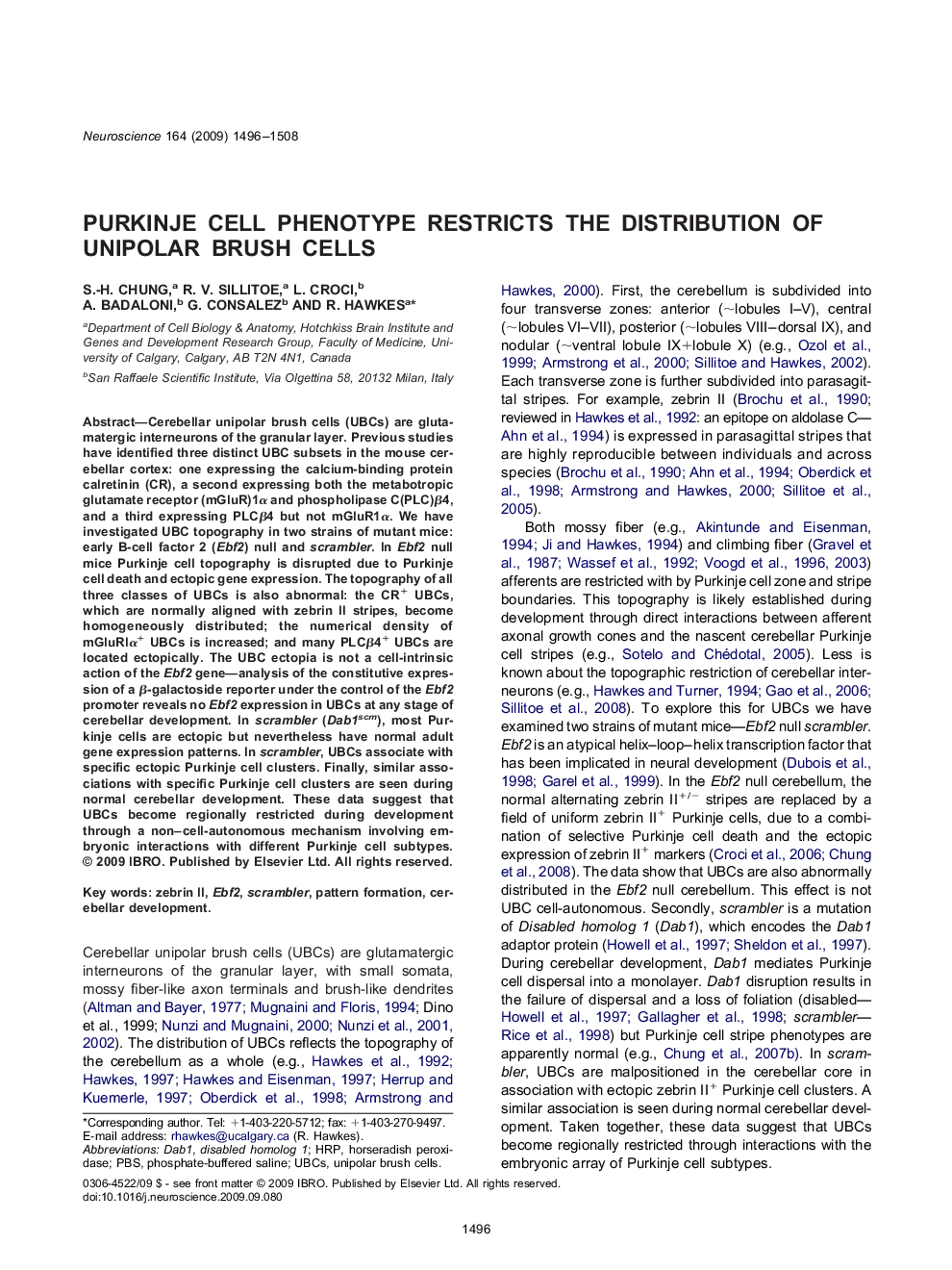| Article ID | Journal | Published Year | Pages | File Type |
|---|---|---|---|---|
| 6277891 | Neuroscience | 2009 | 13 Pages |
Cerebellar unipolar brush cells (UBCs) are glutamatergic interneurons of the granular layer. Previous studies have identified three distinct UBC subsets in the mouse cerebellar cortex: one expressing the calcium-binding protein calretinin (CR), a second expressing both the metabotropic glutamate receptor (mGluR)1α and phospholipase C(PLC)β4, and a third expressing PLCβ4 but not mGluR1α. We have investigated UBC topography in two strains of mutant mice: early B-cell factor 2 (Ebf2) null and scrambler. In Ebf2 null mice Purkinje cell topography is disrupted due to Purkinje cell death and ectopic gene expression. The topography of all three classes of UBCs is also abnormal: the CR+ UBCs, which are normally aligned with zebrin II stripes, become homogeneously distributed; the numerical density of mGluRlα+ UBCs is increased; and many PLCβ4+ UBCs are located ectopically. The UBC ectopia is not a cell-intrinsic action of the Ebf2 gene-analysis of the constitutive expression of a β-galactoside reporter under the control of the Ebf2 promoter reveals no Ebf2 expression in UBCs at any stage of cerebellar development. In scrambler (Dab1scm), most Purkinje cells are ectopic but nevertheless have normal adult gene expression patterns. In scrambler, UBCs associate with specific ectopic Purkinje cell clusters. Finally, similar associations with specific Purkinje cell clusters are seen during normal cerebellar development. These data suggest that UBCs become regionally restricted during development through a non-cell-autonomous mechanism involving embryonic interactions with different Purkinje cell subtypes.
